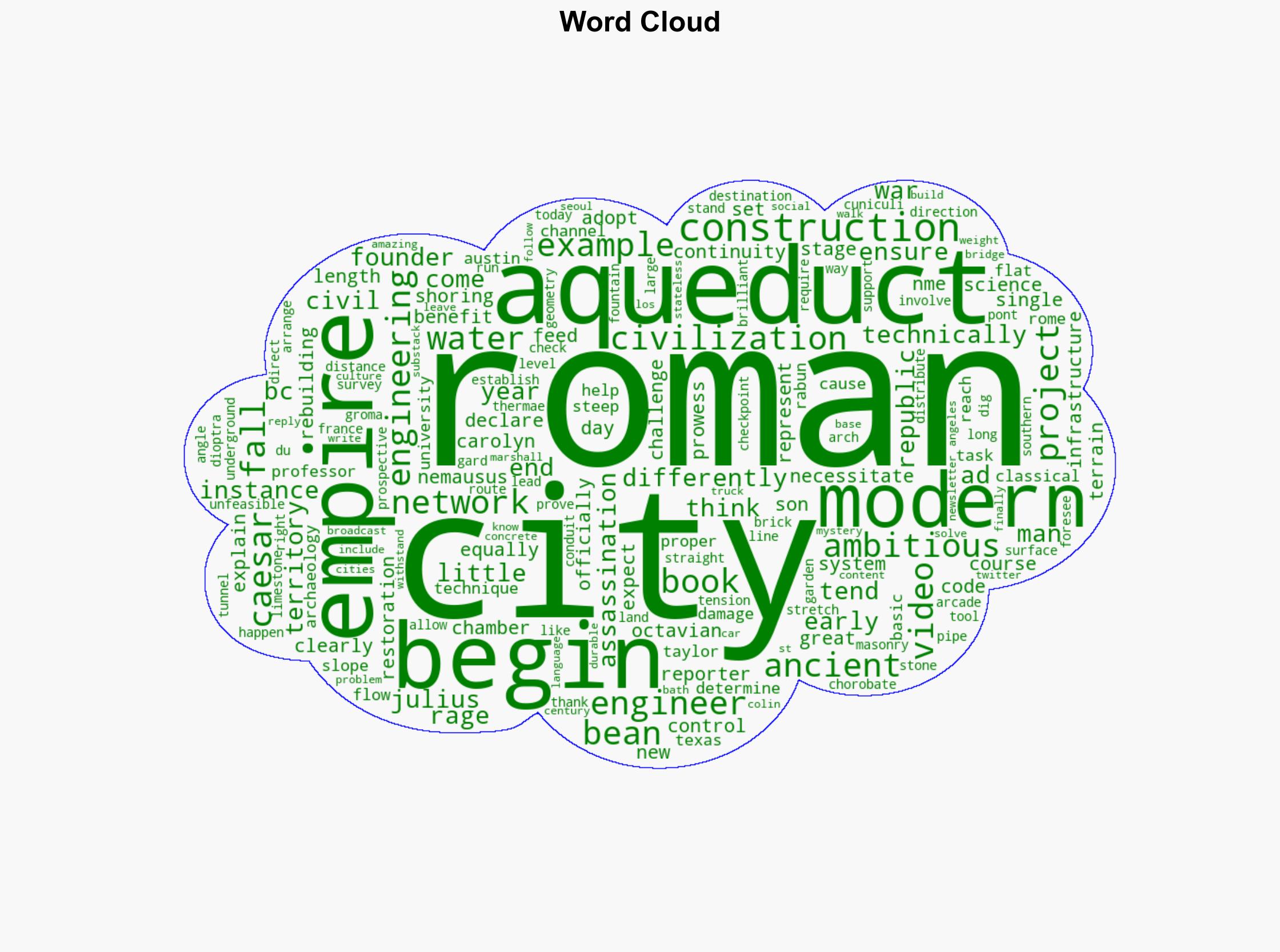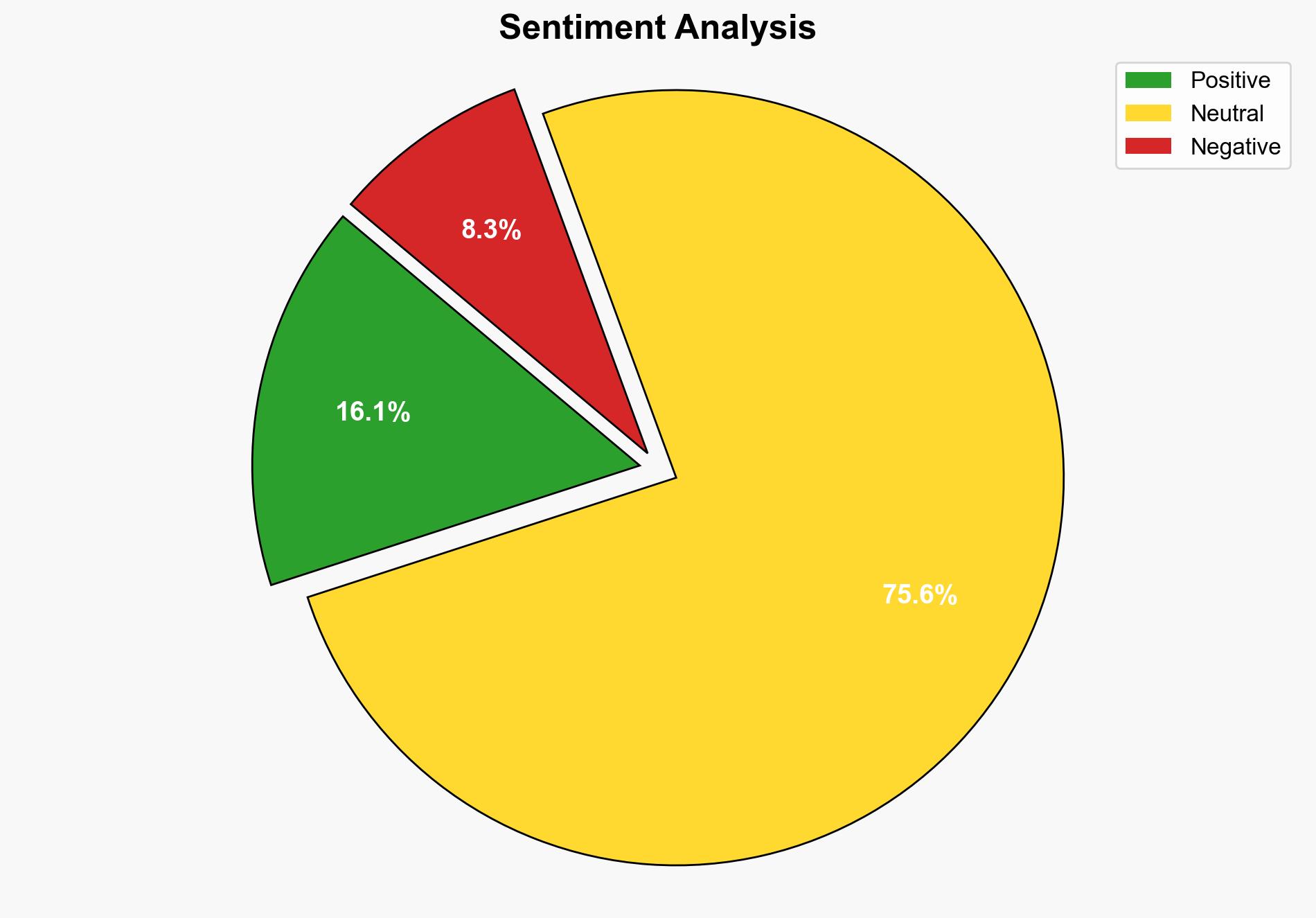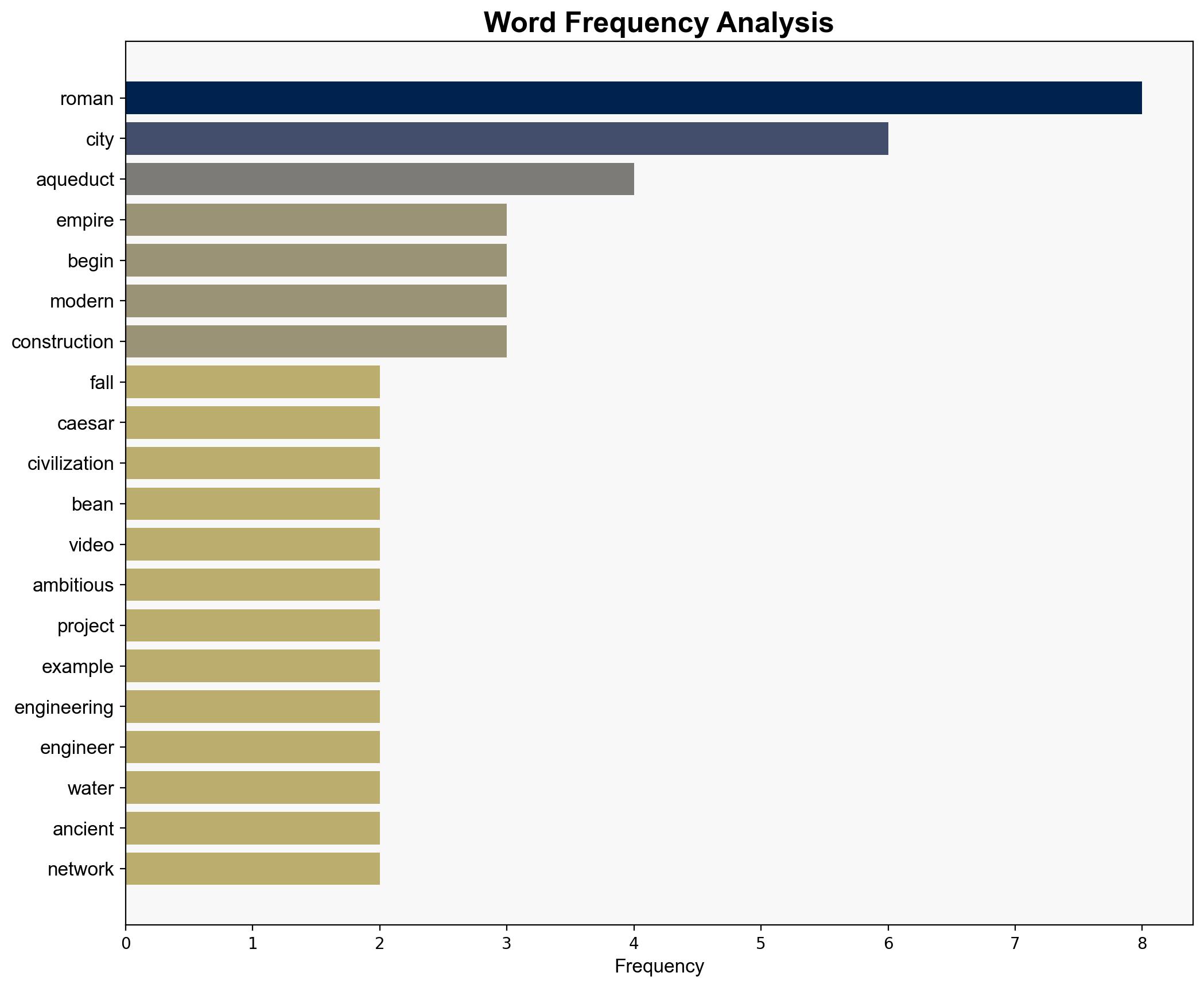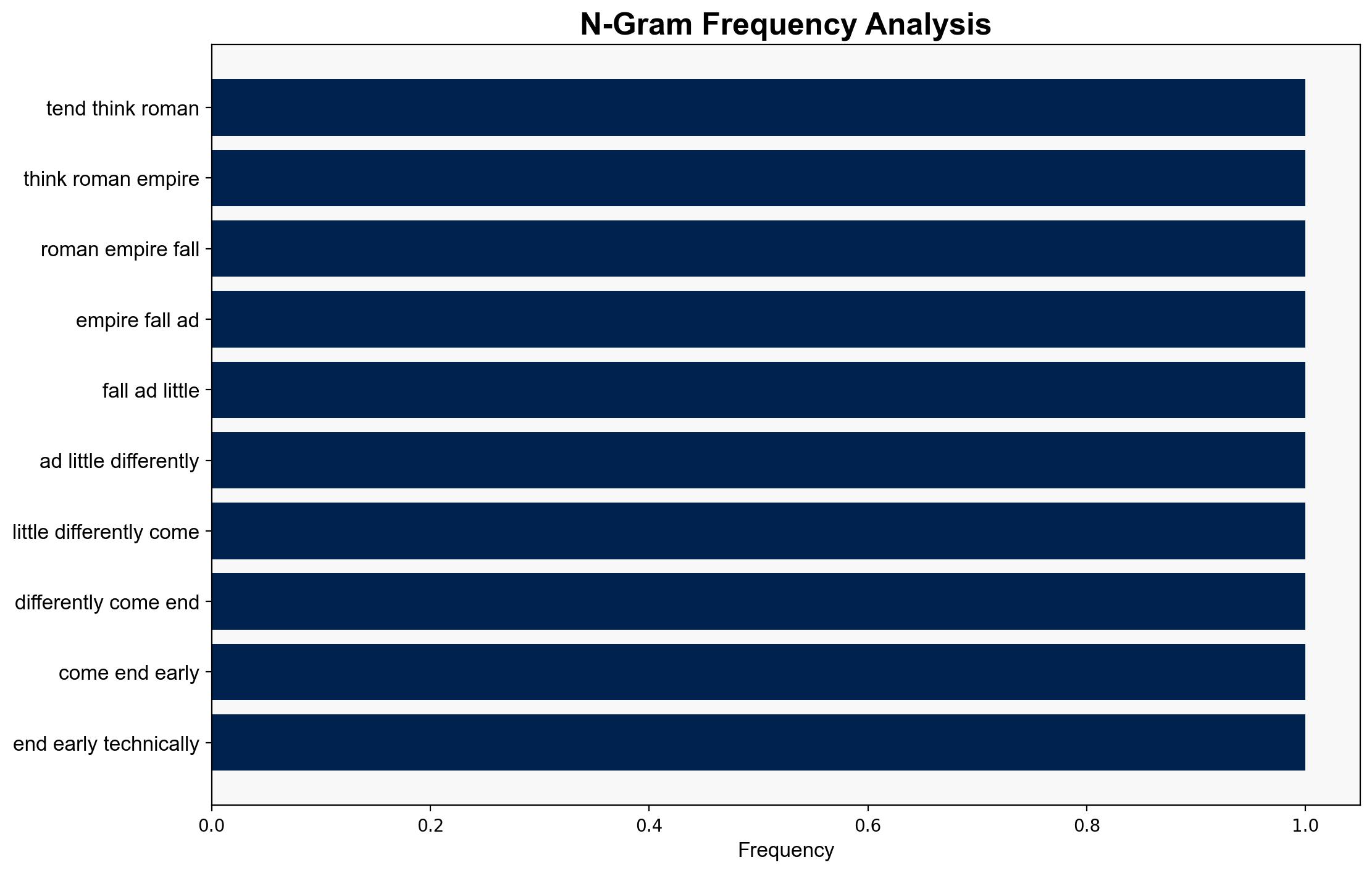The Genius Engineering of Roman Aqueducts – Openculture.com
Published on: 2025-10-16
Intelligence Report: The Genius Engineering of Roman Aqueducts – Openculture.com
1. BLUF (Bottom Line Up Front)
The analysis evaluates the engineering prowess of Roman aqueducts, focusing on their construction and strategic significance. The most supported hypothesis suggests that Roman engineering techniques were advanced and contributed significantly to the empire’s longevity. Confidence level: High. Recommended action: Further study of ancient engineering techniques for modern infrastructure development.
2. Competing Hypotheses
1. **Hypothesis A**: Roman engineering techniques, particularly in aqueduct construction, were a key factor in the empire’s ability to sustain its cities and population, contributing to its longevity.
2. **Hypothesis B**: The Roman aqueducts, while impressive, were not significantly more advanced than other contemporary engineering feats and their impact on the empire’s longevity is overstated.
Using ACH 2.0, Hypothesis A is better supported due to the detailed description of Roman engineering methods and their long-lasting impact, as evidenced by surviving structures like the Pont du Gard.
3. Key Assumptions and Red Flags
– **Assumptions**: Hypothesis A assumes that engineering was a primary factor in the empire’s success, while Hypothesis B assumes other factors (e.g., military, political) were more critical.
– **Red Flags**: The source may exhibit bias by focusing solely on engineering without considering other aspects of Roman society. The lack of comparative analysis with other civilizations’ engineering achievements is a potential blind spot.
4. Implications and Strategic Risks
The Roman aqueducts’ engineering demonstrates the importance of infrastructure in sustaining large populations and urban centers. Failure to invest in modern infrastructure could lead to economic and societal decline. Conversely, leveraging ancient techniques could enhance current engineering practices, reducing costs and increasing durability.
5. Recommendations and Outlook
- Conduct comparative studies of ancient and modern engineering techniques to identify potential improvements in current practices.
- Scenario-based projections:
- Best: Adoption of ancient techniques leads to more sustainable infrastructure.
- Worst: Neglect of infrastructure investment results in societal strain.
- Most Likely: Incremental improvements in engineering practices through historical insights.
6. Key Individuals and Entities
– Carolyn Bean: Science reporter providing insights into Roman engineering.
– Rabun Taylor: Classical archaeology professor contributing expertise on Roman infrastructure.
7. Thematic Tags
national security threats, infrastructure resilience, historical engineering, sustainability




